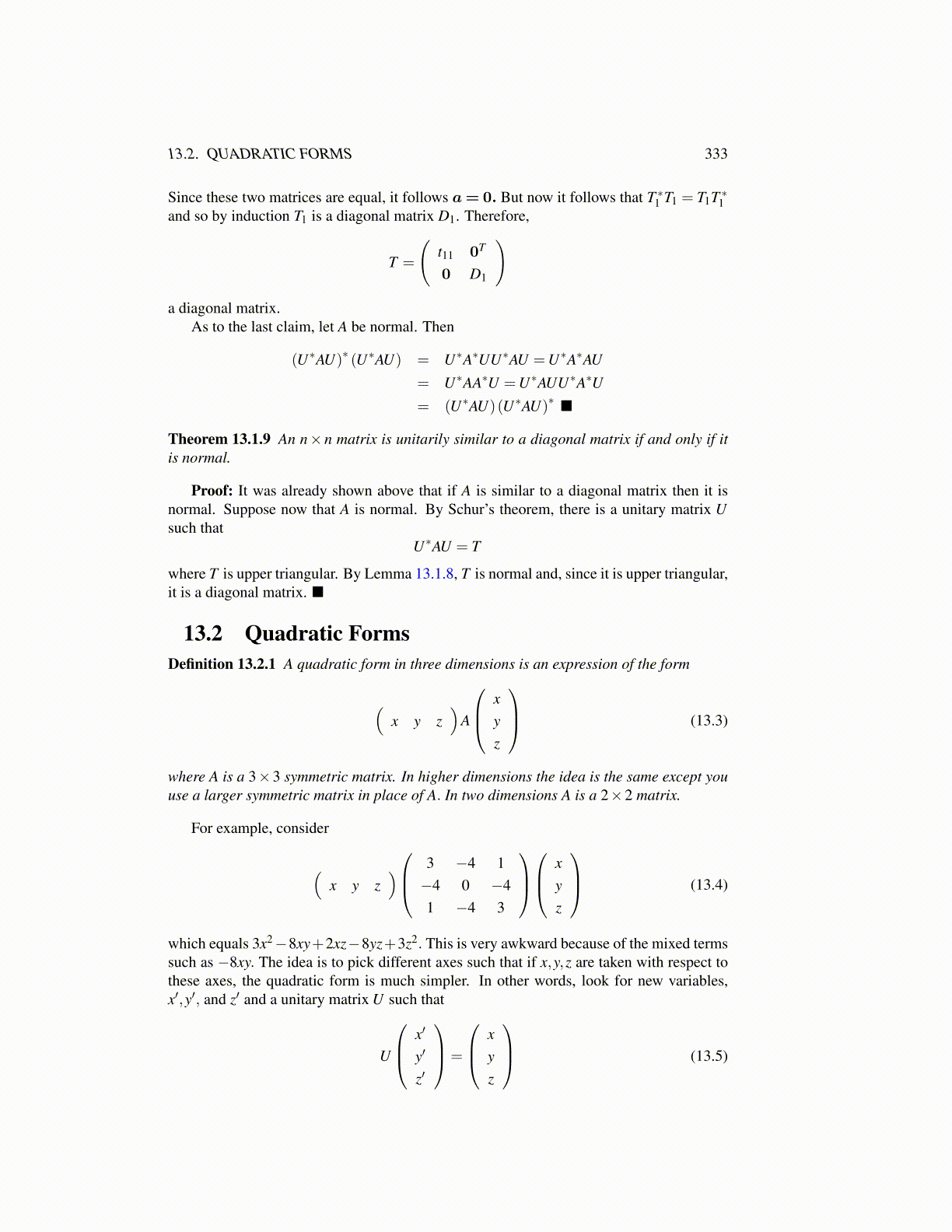
13.2. QUADRATIC FORMS 333
Since these two matrices are equal, it follows a= 0. But now it follows that T ∗1 T1 = T1T ∗1and so by induction T1 is a diagonal matrix D1. Therefore,
T =
(t11 0T
0 D1
)
a diagonal matrix.As to the last claim, let A be normal. Then
(U∗AU)∗ (U∗AU) = U∗A∗UU∗AU =U∗A∗AU
= U∗AA∗U =U∗AUU∗A∗U
= (U∗AU)(U∗AU)∗ ■
Theorem 13.1.9 An n×n matrix is unitarily similar to a diagonal matrix if and only if itis normal.
Proof: It was already shown above that if A is similar to a diagonal matrix then it isnormal. Suppose now that A is normal. By Schur’s theorem, there is a unitary matrix Usuch that
U∗AU = T
where T is upper triangular. By Lemma 13.1.8, T is normal and, since it is upper triangular,it is a diagonal matrix. ■
13.2 Quadratic FormsDefinition 13.2.1 A quadratic form in three dimensions is an expression of the form
(x y z
)A
xyz
(13.3)
where A is a 3×3 symmetric matrix. In higher dimensions the idea is the same except youuse a larger symmetric matrix in place of A. In two dimensions A is a 2×2 matrix.
For example, consider
(x y z
) 3 −4 1−4 0 −41 −4 3
x
yz
(13.4)
which equals 3x2−8xy+2xz−8yz+3z2. This is very awkward because of the mixed termssuch as −8xy. The idea is to pick different axes such that if x,y,z are taken with respect tothese axes, the quadratic form is much simpler. In other words, look for new variables,x′,y′, and z′ and a unitary matrix U such that
U
x′
y′
z′
=
xyz
(13.5)